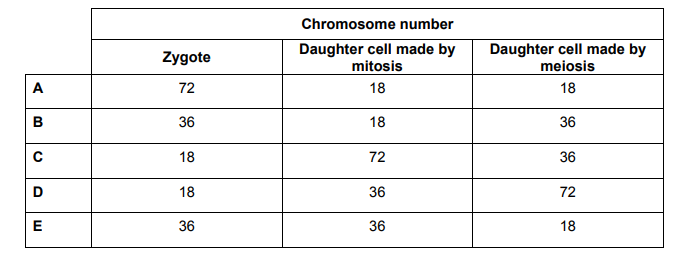If an animal body cell contained 36 chromosomes, which row in the table is correct?

If an animal body cell contained 36 chromosomes, which row in the table is correct?

Each year there is at least one chromosome question on the IMAT. It looks like this is one of these questions! Solving and practicing this kind of question will make you a professional chromosome counter.
Let’s, first of all, understand what we are being asked and what information can we use to deduct the correct answer.
We are given an animal BODY cell, meaning, it has the FULL amount of chromosomes as it isn’t a sex cell that will have half of that. In this case, 36 means 2n=36, and we are being asked how many chromosomes are there in different steps of this animal cycle.
Zygote – the combination of sperm and ova, giving us n-n (where n represents half of the chromosomes, 2n is the full number of chromosomes) So the zygote of this animal should have 2n=36 chromosomes.
Daughter cell made by mitosis – in mitosis, ALL daughter cells have the maximum amount of chromosomes, mitosis is the replication of the somatic cell (every other cell other than the reproductive cell, even though in the reproductive cells there is a use of that two methods, at the result mitosis is a split of the cell into the exact copy of itself) So again, our daughter cell would have 36 chromosomes.
Daughter cell made by meiosis – meiosis is the process of splitting a 2n cell (in our case) into four different n cells with recombinant alleles to make a variety of the original gene combination. A daughter cell would have n cell and therefore 2n=36, n=18,